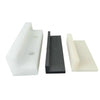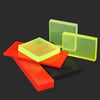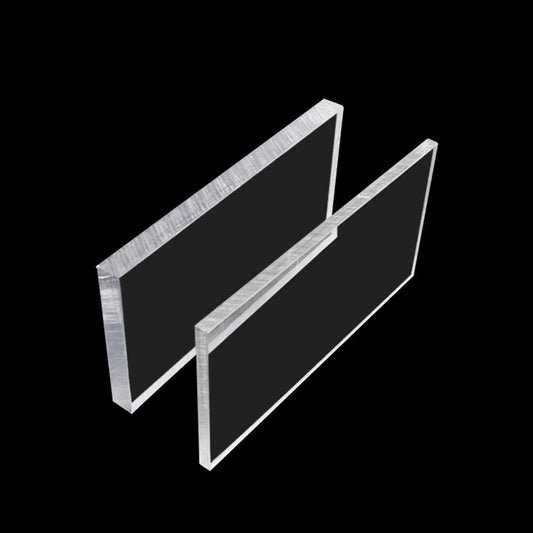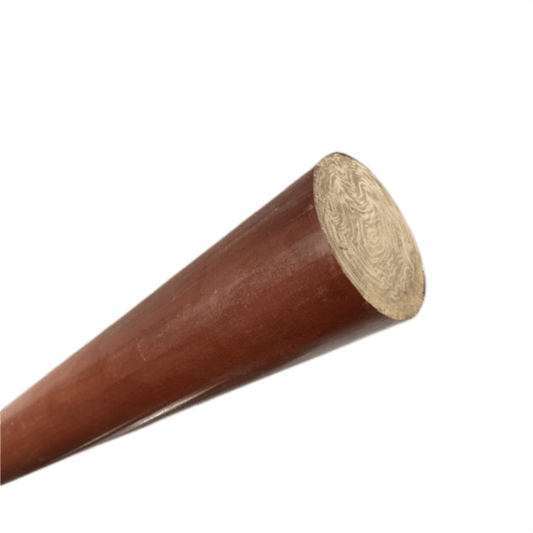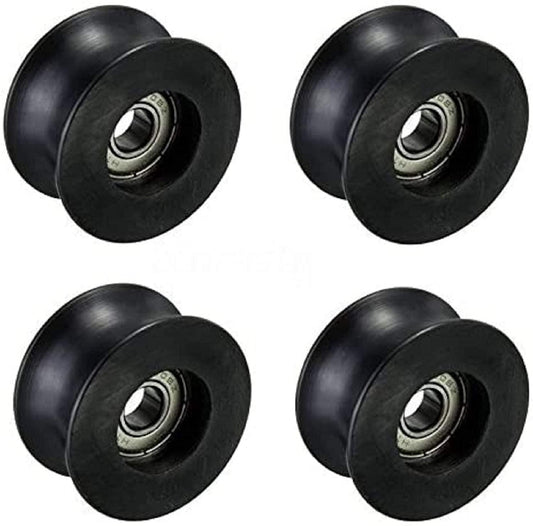When it comes to industrial-grade plastics, I know firsthand how overwhelming it can feel to choose the right material for your custom applications. Especially in manufacturing, processing, or equipment fabrication, you can’t afford to guess. That’s why I’m diving deep into a common comparison many engineers, procurement officers, and technical buyers face—HDPE vs UHMWPE. Whether you're designing sliding parts, protective liners, or chemical-resistant containers, understanding the strengths and limitations of each material could save you time, money, and stress. Let’s figure out which plastic fits your needs best and why making the right decision matters more than ever in a competitive production environment.
🎉🎉🎉Limited Time Offer Use code: QR4GNY08SHVR at checkout and enjoy a special discount on your entire order! 👉 UPE plastic

Understanding the Basics: HDPE and UHMWPE Defined
Though HDPE and UHMWPE originate from the same polyethylene family, they are engineered for different purposes and offer dramatically different performance in real-world applications. The distinction lies in their molecular structure—something invisible to the eye but powerful enough to determine how a material behaves under stress, temperature, friction, and impact.
What is HDPE?
HDPE, or High-Density Polyethylene, is a widely used thermoplastic made from petroleum. It's recognized for its high strength-to-density ratio and is a reliable solution for applications that require chemical resistance, moisture protection, and ease of fabrication. HDPE shows up in everything from cutting boards and food bins to chemical tanks, water piping, and outdoor paneling. It’s a favorite in sectors like agriculture, marine construction, and industrial packaging.
In fabrication environments, HDPE is easy to work with. It can be routed, milled, welded, or thermoformed without excessive tool wear or special handling. Whether you're machining custom shims or assembling structural panels, HDPE offers repeatable performance and cost-effectiveness—especially for high-volume production.
What is UHMWPE?
UHMWPE stands for Ultra-High Molecular Weight Polyethylene. It’s a mouthful, but the performance speaks for itself. UHMWPE features extremely long polymer chains, which translate into high impact strength, abrasion resistance, and a remarkably low coefficient of friction. In other words, it’s tough, it lasts, and it slides like a dream.
Commonly used in conveyor wear strips, liner systems, snowplow blades, dock bumpers, and even ballistic applications, UHMWPE is ideal for components exposed to ongoing friction, heavy impact, or rough materials. It's self-lubricating, noise-reducing, and doesn’t crack or chip under pressure. It’s less about affordability and more about long-term endurance in the harshest settings.

Comparing Mechanical Properties: Durability, Friction, and Impact Resistance
Let’s get into the performance specs—the part every engineer wants to see. Choosing between HDPE and UHMWPE often comes down to how each material behaves under mechanical stress.
Durability and Impact Strength: UHMWPE takes the lead when it comes to toughness. It can withstand repeated pounding, scraping, and sliding without deforming or breaking down. In contrast, HDPE offers solid durability in static or low-impact environments but may show signs of wear more quickly in aggressive conditions.
Friction and Surface Wear: UHMWPE is known for having one of the lowest coefficients of friction among plastics. That means less drag, less heat, and less noise—making it a preferred choice for moving assemblies and sliding contact points. HDPE has decent wear resistance, but if you’re dealing with high-speed movement or abrasive flow, UHMWPE will simply last longer.
Stiffness and Load-Bearing: HDPE is the winner in rigidity. It holds its shape better, making it a solid option for parts that need to stay flat or bear structural loads. If you’re machining precision panels, mounting surfaces, or pipe flanges, HDPE gives you more control.
Chemical and Environmental Resistance: Both materials perform well against acids, bases, and solvents, but UHMWPE handles extreme chemical exposure better. Both resist water, UV exposure (with additives), and most weathering conditions, but UHMWPE performs more reliably in aggressive industrial settings.
Processing & Machining: Which One Works Better for Custom Jobs?
In my experience, how a material machines is just as important as how it performs in use. That’s where HDPE really proves itself.
HDPE can be processed with standard plastic fabrication equipment. It cuts cleanly, produces minimal burrs, and forms easily with heat or pressure. For CNC routing, sheet bending, or simple thermoforming, HDPE gives you fast results without driving up tool wear. This translates to lower labor costs and tighter lead times.
UHMWPE, while unmatched in toughness, does come with challenges. Its slick surface and high molecular weight make it difficult to glue or weld. It must be machined using very sharp tools and slower feed rates to avoid surface melting or irregular finishes. The material also tends to “creep” or deform under prolonged stress, which must be factored into tight-tolerance parts.
Still, if you need a low-maintenance, high-performance component in a demanding environment, UHMWPE can outlast other plastics—offsetting the added machining effort with fewer replacements.

Choosing by Application: Real-World Use Cases in Industry
Now, let’s look at how each material plays out in real-world settings:
HDPE is commonly used in:
-
Water treatment systems
-
Chemical processing tanks
-
Agricultural equipment housings
-
Cutting boards and food-grade liners
-
Marine structures and dock fenders
UHMWPE is ideal for:
-
Conveyor belt wear strips and guide rails
-
High-impact sliding surfaces
-
Chute and hopper liners
-
Bullet-resistant panels and protective shields
In short: if your components face repetitive wear, impact, or the need for near-zero maintenance, UHMWPE is likely your best investment. If your goal is versatile, easy-to-process material for a broad range of moderate-duty tasks, HDPE offers tremendous value.
Cost Considerations and Material Value
Here’s where practical decisions are made. Price always matters—but it’s the total lifecycle cost that tells the real story.
Initial Cost: HDPE is less expensive per sheet, rod, or part. For standard applications or prototyping runs, this can significantly reduce project budgets.
Processing Costs: HDPE also costs less to fabricate. It’s faster to cut, easier to form, and places less strain on your equipment—keeping tool replacements and operator fatigue to a minimum.
Long-Term Value: UHMWPE may cost more upfront, but in harsh environments, it can last 3-5 times longer than HDPE. Fewer breakdowns and part replacements mean lower maintenance costs, less downtime, and better ROI over time.
Your decision shouldn’t just hinge on price per pound. Factor in how often a part will need replacing, the cost of unscheduled shutdowns, and your team’s ability to machine or maintain each plastic. The smarter choice may not be the cheaper one—but the one that performs longer.

Final Thoughts: Making the Right Choice for Your Custom Project
So, which material wins in the HDPE vs UHMWPE debate? That depends on your priorities. If your job calls for simple fabrication, structural rigidity, and budget-conscious scaling, HDPE is a workhorse that’s hard to beat. If you need maximum resistance to friction, abrasion, and impact, UHMWPE is the premium solution built for rugged reliability.
Don’t choose based on guesswork or assumptions. The right plastic makes a real difference in productivity, performance, and profitability.
Ready to Get the Right Plastic for Your Project?
If you're looking for custom HDPE machining for panels, spacers, tanks, or structural applications, explore the full range of HDPE sheets and rods available for machining.
Need industrial-grade UHMW plastic components designed for high-impact or sliding applications? Browse our dedicated UHMWPE custom fabrication services, or review our complete line of UHMWPE sheets, rods, and machined parts.
If you're working on more complex assemblies or seeking high-clarity alternatives, check out our premium acrylic materials for every need—perfect for transparent, structural, or display components.
Want a full breakdown of what we can handle? Visit the BeePlastic manufacturing capabilities page to discover how we tackle CNC machining, thermoforming, welding, and more.

🎉🎉🎉Limited Time Offer Use code: QR4GNY08SHVR at checkout and enjoy a special discount on your entire order! 👉 UPE plastic
Have a spec in hand or just an idea in mind? Submit your custom plastic requirements and I’ll personally help you select the right material, process, and path to get your project started right.


